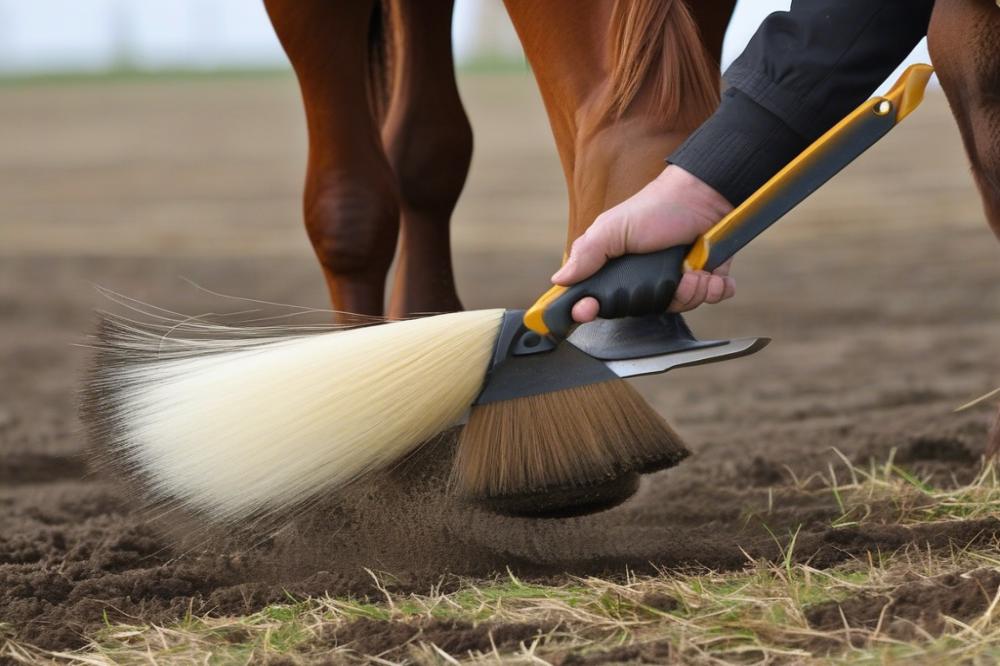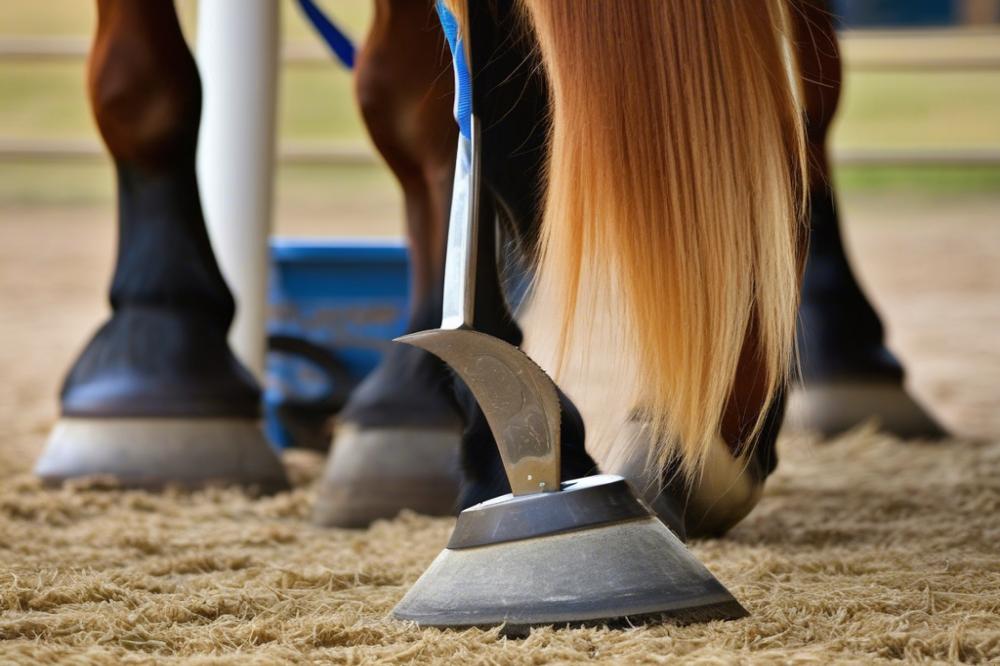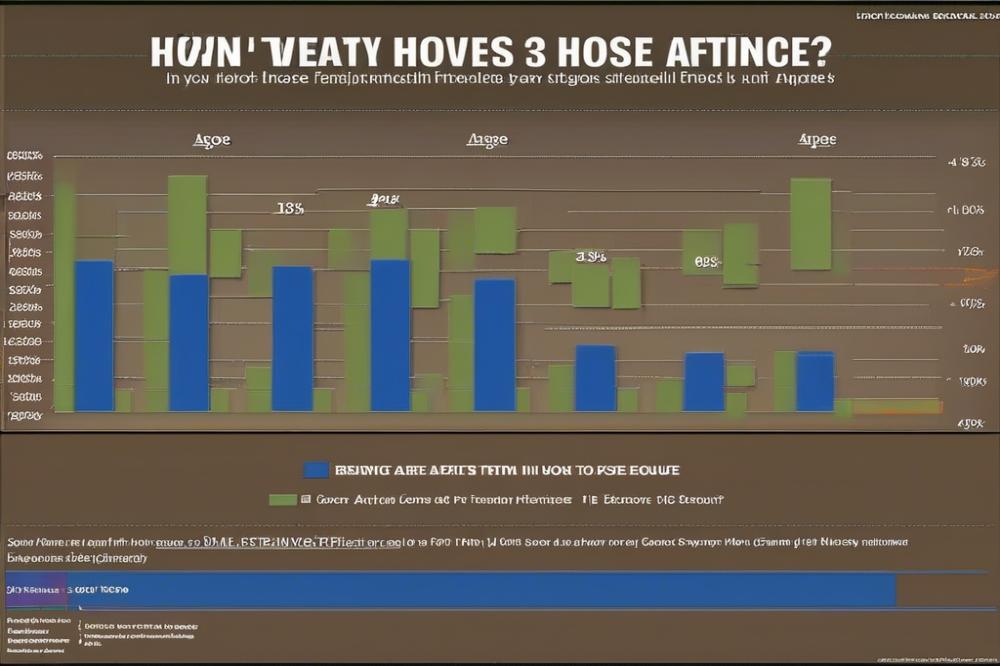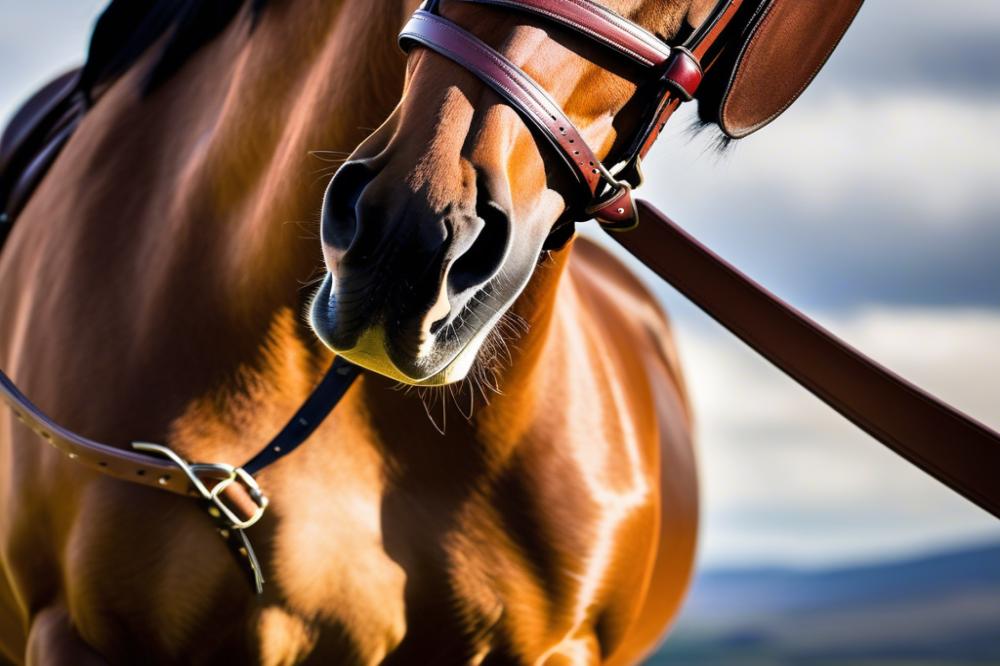Understanding the Importance of Hoof Care
Hooves are like the foundation of a house; if they are not strong and well-maintained, everything above them can crumble. The health of a horse depends significantly on proper hoof care, which plays a crucial role in their overall well-being. When we talk about horse care, hoof maintenance often takes the spotlight, yet it is sometimes overlooked. Keeping hooves in shape is essential, not only for daily activities but also for the long-term health of your beloved equine companions.
How Often Should You Trim?

Many horse owners wonder about the frequency of trimming when it comes to their steeds. The answer isn’t set in stone. Factors like the horse’s activity level, the type of terrain they roam, and even the horse’s age can influence how often these hoof haircuts should occur. Normally, a trim can be needed every six to eight weeks, but you might find some horses require it more often, while others can stretch it a bit longer. It can be much like adults riding ponies; sometimes each pony takes a different approach to fun!
What’s the Purpose of This Article?

In this article, we aim to provide you with a clear understanding of horse trimming and its relation to equine welfare. The more you know about the importance of hoof care, the better equipped you will be to make informed decisions for your horse’s needs. Whether you own one of the best war horse breeds or a gentle trail horse, hoof care is vital. By following some guidelines and tips on hoof maintenance, you’ll be on your way to ensuring your horse stays healthy and happy. So let’s dive deeper into the world of hoof care, and perhaps you might even chuckle a little along the way!
Understanding Horse Hoof Anatomy

Basic Structure of Horse Hooves
Horse hooves are quite fascinating. They consist of several parts, each playing a role in supporting the animal. The outer covering, known as the hoof wall, is made of a hard material called keratin. It’s similar to our fingernails, but much tougher! Inside the hoof, you’ll find sensitive structures like the frog and sole. The frog, which looks a bit like a triangular cushion, helps absorb shock when the horse moves. Meanwhile, the sole protects the inner structures and provides some support.
Function of Hooves in Horse Health
Hooves aren’t just shoes for horses; they are vital to their overall health. They help with balance and stability. A horse’s hoof takes on the full weight of the animal with every step. Healthy hooves allow horses to run, jump, and perform well in various activities. Good hoof care promotes circulation and can even help prevent lameness. When hooves are trimmed regularly, they grow at a healthy rate. Keeping this cycle in check contributes to equine welfare and a happy horse.
Consequences of Neglecting Hoof Care
Skipping on hoof care can lead to serious issues. Left untrimmed, hooves can grow excessively long, which may cause discomfort. An overgrown hoof can lead to cracks, infections, or even serious lameness. Not caring for hooves could impact a horse’s ability to perform and enjoy life. Imagine trying to walk in shoes that don’t fit—painful, right? Additionally, neglecting equine hoof care can result in costly treatments later on. Regular attention to horse hoof maintenance does wonders in keeping your equine friend healthy and happy.
Factors Influencing Hoof Trimming Frequency
When it comes to horse hoof maintenance, several important elements come into play. First, think about the type of horse you have. Different breeds have varied hoof structures and growth rates. A thoroughbred might need more frequent trims than a draft horse. Age also matters! Young horses tend to grow their hooves faster, while older ones may have slower growth due to age-related issues.
Next up is living conditions. Horses kept in a stable often have their hooves trimmed more regularly. Why, you ask? Being confined can affect natural wear. Those on pasture land naturally wear down their hooves more. Muddy or rocky terrain can also play a role. These factors significantly impact equine hoof care.
Activity level crosses another bridge. Horses that work hard, like those in competitive settings, usually require more maintenance. If you ride your horse often or engage in heavy exercise, don’t be surprised if hoof trimming becomes necessary more frequently. On the flip side, a retired horse might need less attention.
Let’s not overlook seasonal changes. Hoof growth can speed up during spring and summer when the weather is warmer. In contrast, colder months often lead to slower growth. This dynamic means adjusting your hoof care routine throughout the year. Keeping an eye on your horse’s feet will help maintain good horse health.
In the end, horse trimming takes a keen eye and understanding. Each horse is different, after all. By considering these factors, you’ll be well on your way to ensuring optimal hoof care.
General Guidelines for Hoof Trimming Frequency
Horse owners often hear that trimming should occur every 6 to 8 weeks. This timeline is a solid rule of thumb, but it’s not written in stone. Different horses have different needs, just like people. Some may need trimming a bit more often, while others can go a little longer. It’s all about what’s best for your four-legged friend.
When considering horse health, pay attention to each animal’s growth rate. Factors such as age, breed, lifestyle, and activity level play a role in hoof wear. A thoroughbred galloping on trails tends to wear down hooves quicker than a draft horse leisurely munching hay in a pasture. Thus, one horse might need more frequent horse hoof maintenance than another. The environment also makes a difference. Wet, muddy conditions can lead to softer hooves, while dry terrains may produce hard, brittle hooves.
Recognizing signs that trimming is due can be quite helpful. Does your horse’s hooves look uneven? Perhaps there’s a noticeable cracking or splitting? Those are red flags that hoof care is necessary. Even excessive growth can make a horse’s gait uncomfortable. If you notice signs of discomfort or hesitance, it might be time to call the farrier.
Keep an eye out for chips or flares on the edges of the hooves. Horses communicate in their own way, and these irregularities can signal that they need some care. Regular inspections will help catch problems early, keeping your horse happy and healthy. Remember, preventing issues through horse trimming is better than reacting to them later.
Lastly, don’t forget to consult professionals for equine welfare! Farriers know their stuff. Rely on their expertise to help you create a trimming schedule that works. After all, a well-trimmed hoof is not only a matter of beauty but also of comfort for your mount.
Signs That Your Horse Needs Hoof Trimming
Visual Indicators
Spotting the signs that a horse’s hooves need trimming can be quite straightforward if you know what to look for. Cracks and splits can appear as a telltale sign of neglect. If you see an overgrowth, it’s a red flag waving at you. A hoof that’s starting to resemble a tree trunk is begging for attention. Keep a keen eye out for these visual cues, as they often indicate that your horse’s equine hoof care routine needs some adjustments.
Behavioral Changes
It’s not just about looks, either. Sometimes, horses will tell you they’re uncomfortable without saying a word. Have you noticed your horse limping or acting a bit off? Lameness can point to hoof issues. Additionally, a sudden reluctance to move could mean that your horse is feeling pain in its feet. Horses are naturally active creatures; if yours seems less enthusiastic about strutting their stuff, it’s time to investigate further. They can’t speak our language, but their actions sure can.
Importance of Regular Monitoring
Regularly checking your horse’s hooves is crucial for horse health. Just like we need to brush our teeth, horse trimming should be a part of routine care. Think of it this way: delayed maintenance often leads to bigger problems down the line. Creating a habit of looking at your horse’s feet can prevent those pesky issues from popping up. Consider making hoof care a game; it can turn a chore into a bonding experience. No one wants to be the person who finds a problem too late. Keep their hooves in tip-top shape, and you’ll both be happier for it!
The Role of Professional Farriers
When to Consult a Farrier
In horse care, knowing when to call a farrier can make all the difference. If your horse’s hooves look chipped, cracked, or uneven, it’s time to reach out. Signs of discomfort while walking can also indicate issues that need attention. Freshly trimmed hooves should maintain a healthy appearance. Regular check-ups can spot potential problems before they escalate.
A horse’s hoof growth can change based on many factors, such as diet and environment. If you’re unsure how often to trim, a farrier can guide you on best practices for equine hoof care. Scheduling a visit every six to eight weeks is often recommended. However, factors like age, activity level, and terrain can steer you off the standard path. Never ignore discomfort; a farrier can identify underlying issues that you may miss.
Choosing a Qualified Farrier
Finding a good farrier is crucial for horse health. Not every farrier has the same skills and knowledge. Look for someone with proper training and experience. Ask fellow horse owners for recommendations, or check online reviews. A reliable farrier should be certified or have completed apprenticeships. Meet with a potential candidate and ask questions about their approach to horse trimming.
Consider their handling of different breeds and styles of shoes. A good connection with both horse and owner is vital. Observe how they communicate with your horse—a calm demeanor generally means your horse will feel safe. A farrier should also provide educational tips about hoof maintenance and what signs to look out for.
Importance of Regular Farrier Visits
Regular visits from a farrier are essential for equine welfare. Consistent hoof care helps prevent issues like laminitis or thrush. Healthy hooves support overall horse health. They also enhance your horse’s performance, making rides smoother for both horse and rider.
Ignoring hoof maintenance can lead to costly problems later. Schedule appointments like clockwork to keep hooves in top shape, and don’t skip out just because things look fine today. A preventing mindset saves you time, money, and stress in the long run. Remember, a happy horse is a healthy horse, and hoof care plays a big role in that happiness.
Stay in tune with your horse’s needs, and don’t hesitate to lean on your farrier’s expertise. After all, keeping your equine friend comfortable and healthy should always take center stage.
Maintaining Hoof Health Between Trims
Daily Hoof Care Practices
Keeping your horse’s hooves in top shape doesn’t stop after a trim. Daily checks are key. Look for cracks, chips, or anything unusual. A diligent routine can save you from bigger problems down the line. Dirt and debris can get packed in the hooves, so clean them out with a hoof pick regularly. It’s a simple task, but it helps a lot.
When you’re checking, feel for heat or swelling. Both can signal issues. Don’t forget to check for thrush, that nasty condition that affects the frog. If you see anything concerning, call your farrier. They are the experts in equine hoof care and can guide you on next steps.
Diet and Nutrition Affecting Hoof Health
Food plays a big role in a horse’s overall well-being, including hoof health. A balanced diet keeps hooves strong and resilient. Ensure your horse gets plenty of vitamins and minerals. Biotin, zinc, and protein especially contribute to good hoof growth.
Consider adding hoof supplements if your horse’s diet is lacking. Some owners swear by them. They often help strengthen hooves and improve quality. Understand that every horse is different, so what works for one may not work for another. Always consult your vet before making changes.
To keep your horse’s weight in check, provide appropriate portions. An overweight horse can have hoof issues. Look out for grass and rich feeds that might make them gain too much weight too quickly.
Choosing the Right Footwear (Shoes vs Barefoot)
Making a choice between shoes and going barefoot can be a challenge. Each option has its pros and cons. Shoes offer protection, especially if your horse works on rocky terrain. They can help with traction and improve performance while riding.
On the flip side, some horses do just fine without shoes. Going barefoot allows the hoof to grow naturally. It can also save on trimming costs and make your heart happy, knowing you’re supporting equine welfare. However, it requires more maintenance.
Ask your farrier for a professional opinion. They can help determine what’s best for your horse based on lifestyle, environment, and hoof condition. Remember, good horse care involves considering all aspects, including the type of footwear. Each choice impacts horse health quite a bit!
Wrapping It Up: The Importance of Frequent Hoof Care
In summary, the frequency of trimming a horse’s hooves plays a crucial role in their overall health and well-being. It’s not just a matter of aesthetics; a well-kept hoof can mean the difference between a happy horse and a potential disaster. Think of hooves like a car’s tires. If they wear unevenly, trouble is bound to rear its head. Regular trimming helps maintain their shape and function, which keeps your horse trotting along comfortably.
Prioritizing hoof care is essential for your equine friend’s overall health. You wouldn’t ignore a flat tire on your car, so why ignore hoof issues? When hooves grow too long or develop cracks, discomfort or lameness can follow. No one wants a horse that’s less eager to gallop or prance. Plus, healthy hooves can prevent larger problems down the road—like sore legs or joint issues.
Establishing a routine for hoof trimming doesn’t have to be daunting. Every horse is unique, and understanding your individual horse’s needs is key. A good rule of thumb is to check your horse’s hooves at least every few weeks—this can help you spot any issues before they escalate. Just like training, consistency is vital. A little attention here goes a long way.
Ever wondered do horses understand humans? With proper care routines, it can feel like you’re both speaking the same language! And while you’re at it, consider your horse’s ear movement. You might notice that horses often communicate through their ears, and understanding horse ear meaning can give you insight into their feelings. Keeping track of their hoof health can foster that bond even further.
So, as you saddle up and ride into the sunset, remember that tending to those hooves is as important as the ride itself. Regular hoof trimming not only keeps your equine partner happy but also helps you avoid emergencies. Let’s keep them galloping and shining like the stars they are!



